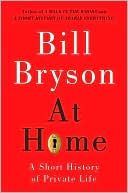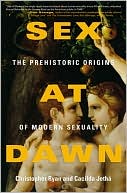Love for Sale: A World History of Prostitution
Beginning with the epic of Gilgamesh, the Old Testament, and ancient cultures from Greece to India and beyond, Love for Sale takes the reader on a tour through the entire recorded history of prostitution around the globe up to the modern red-light district. It shows how different societies have viewed and dealt with prostitutes - for example, how ancient Greece and Rome incorporated them into several social echelons, even the priestess class; how the rise of the courtesan in...
Search in google:
From the Whore of Babylon to Pretty Woman, the exchange of sex for money is often cited as the oldest profession. Now, eminent historian Nils Johan Ringdal delivers a magisterial, extremely readable world history of this most maligned—and most persistent—form of human commerce. Beginning with the epic of Gilgamesh, the Old Testament, and ancient cultures from Greece to India and beyond, Love for Sale takes the reader on a tour through the entire recorded history of prostitution up to the modern red-light district. It shows how different societies have dealt with prostitutes: ancient Greece, Rome, and India incorporated them into several social echelons, including the priestess class; their close relations with artists in 19th-century Europe made them muses to the modern sensibility; and the Victorians campaigned against them. Love for Sale closes with Sydney Biddle Barrows, the rise of the sex-workers' rights movement and contemporary "sex-positive" feminism, and a realistic look at the true risks and rewards of prostitution in the present day. Publishers Weekly Norwegian historian Ringdal argues that prostitution is, in many cultures, a borrowed tradition, but his evidence suggests that prostitution emerged of its own accord in most cultures although in wide-ranging forms. Under European influence, for example, an Asian tradition of contracted temporary marriage evolved to direct pay for individual encounters. In Africa, according to Ringdal, European missionary campaigns against polygamy actually resulted in greater numbers of women entering prostitution. Ringdal considers varying perceptions of promiscuity and prostitution as well as economic, cultural and moral analyses of why women, and to a lesser extent men, enter the business. Given the book's scope, it goes almost without saying that some eras are treated in greater depth than others. Some chapters are based on very few sources, and while we might want greater analysis of ancient temple prostitution or greater care in identifying biblical figures, we get rather too much detail on how the Mayflower madam ran her business. Ringdal wrestles with but does not bring into clear focus the issue of choice in modern prostitution. In early chapters, he sets up a straw-man "feminist" argument, but not until the final chapters does he directly engage some of the researchers and activists with whom he differs. On the whole, however, this study provides both a fascinating range of evidence across world cultures and the opportunity to see broad patterns in attitudes toward sex for hire and the relation between these attitudes and women's freedoms. 32 pages of color and b&w illus. not seen by PW. (Apr. 19) Copyright 2004 Reed Business Information.
Love for Sale\ A World History of Prostitution \ \ By Nils Johan Ringdal \ Grove Atlantic, Inc.\ Copyright © 2004 Nils Johan Ringdal\ All right reserved.\ ISBN: 0-8021-1745-7 \ \ \ Chapter One\ The Whore of Babylon \ She bears the name The Whore, the first prostitute we encounter in world literature. She appears in the four-thousand-year-old epic Gilgamesh. Like all superheroes, Gilgamesh is solitary, handsome, and brave, and in addition, a prince. His sexual appetite is enormous; he leaves no young maiden in peace, and hardly any young lad, either.\ The people of his land must possess deep insight. They understand that Gilgamesh is so sex-mad simply because he is bored, and they pray to the gods to let him meet his equal. Thus, Enkidu comes to life, a man as big and strong as Gilgamesh, slightly shorter, although he looks more muscular and has a far hairier body. The nameless harlot enters the story next. She is called Harimtu, in ancient Babylonian, a term the lawgiver Hammurabi uses to refer to a low-class prostitute in one of Ishtar's temples.\ Ishtar is an exciting and dangerous deity, simultaneously goddess of love and war. She is the daughter of the moon god, related to the superior gods and considered Queen of Heaven. Her main symbol is the planet Venus. She was venerated as both the morning and the evening star; she was born anew as a maiden every morning but became a whore every evening. As goddess of war, she is depicted with sword, bow, and quiver. She rides a lion, and is often depicted with several arms.\ In Mesopotamia between the Tigris and Euphrates, different ethnic groups ruled in ancient times. The Sumerians built the first civilization, before the Babylonians took power, followed by the Assyrians, until the neo-Babylonians took over again. But religiously, the area remained stable, and although the Sumerians called the goddess Innana, she remained one and the same. She certainly lacked female rivals in the world of the gods. Some low-status goddesses were associated with birth and the role of mothering, but they were worshiped only locally, under simple names like Mama and Baba. The women in Ishtar's service helped the men who offered money to her temples, with the sacred powers of their bodies, yet the way in which the aristocratic women served her remained more of a holy secret. Ishtar calls herself protector of all prostitutes, including those who offered their bodies in doorways outside the temples or tempted the men in taverns. But when the goddess speaks about herself as a harlot, it has little to do with paid sex: She would make love to any man she happened to desire.\ Enkidu lived out on the steppes as a savage until one day he encountered the harlot from Ishtar's temple in Uruk. He spent six days and seven nights with the harimtu woman, who lavished him with love of all kinds: maternal devotion, tenderness, mystical transcendence, and orgiastic sex. She also taught him to break bread and to drink wine, to clean and to take care of his body. This was far more than a quick screw; it amounted to an intensive course in civilization. Ishtar herself had authorized the harlot who educated the savage. After one intense week, all traces of savagery were gone: Enkidu had become civilized and prepared for life in urban society.\ The Woman bared her Breasts, Untied her Loincloth and opened her Legs, And he took Possession of her Comeliness. She used not Restraint, but accepted his Ardor, She put aside her Robe and he lay upon her. She used on him, a Savage, a Woman's Wiles; His Passions responded to her. For six Days and seven Nights, Enkidu Approached and coupled with the Prostitute. After he was sated with her Charms, He set his Face towards his Game ... Enkidu hastened after them, but found his Body bound. His Knees failed, when he tried to hunt his Game. Enkidu had become weak, his Speed not as before. But he had Intelligence. And wide was his Understanding.\ The harlot spoke to Enkidu of Gilgamesh: "He is a fabulous man, bursting with strength and ability to spread happiness." By now both heroes were eager to meet each other. Gilgamesh had a dream in which a star fell from the heavens, so big he could not lift it. But he was able to bend over it, as over a woman. He also dreamed of an ax. In the old Babylonian text, the reader encounters wordplay, since the words for star/man and ax/male prostitute sound almost identical. Gilgamesh's mother explained diplomatically that her son was about to meet his peer.\ But two such heroes cannot become friends without a colossal brawl. It did not end before both found out that they were equal in strength and courage. The people were exultant, because Gilgamesh had finally met his match. The women prepared the bed, and the heroes kissed each other, became best friends, and planned to carry out great deeds-together. They continued to seduce young maidens and occasional lads, but at a less hectic pace than before. Their friendship had obviously tamed them both.\ The Gilgamesh epic is drawn from versions dating from the Old Babylonian period, around 1800 b.c., and the following Assyrian times, but it was not known by the Greeks and the Romans, and it seems to have been forgotten for millennia. None of the texts we know today is complete, so different versions have been reconstructed based on Assyrian, Old and New Babylonian texts. The heroic poem might have a tiny base in real history, since the Sumerians were ruled by a king named Gilgamesh between 2750 and 2600 b.c., but it cannot be considered a historical text. Nevertheless, it is an extremely useful source for understanding social and sexual relations, love, respect, and violence between man and man, and between man and woman. Of utmost importance are what the poem explains about the goddess Ishtar and the sexual assistance offered by women in and around her temples.\ Prostitution came into existence in its first and Western variety in and around Mesopotamian temples. There the temple was the city, the earthly residence of the god or goddess. There a deity received food and clothing, was washed, cared for, adored, and worshiped.\ Most activities were concentrated around the temple. The building and maintenance of the irrigation system necessary for agriculture and other prerequisites for large-scale society were conducted from there. Markets grew up in front of the entrance. But economic activities also took place inside, where the grain silos and the tax offices were located. A god or goddess provided protection; money and precious metals were placed in locked chests and stored in the inner sanctum. Fees were paid, much as when one rents a safe-deposit box in a modern bank. The priests and priestess would loan money, too. Interest was given. The love goddess's temple in Lydia loaned King Croesus the initial money that enabled him to achieve legendary wealth.\ Large temples were equipped with a stepped tower made of bricks, up to 150 feet high. At the top was a minuscule temple for naditu, highborn priestesses qualified for especially intense communication with the deity. An old Sumerian text quotes the goddess of love and fertility:\ Who wants to plow my Womb? Who wants to plow the Grain that grows so high? Who wants to make my moistened Fields bear Fruit?\ The answer from the god who was her relative and lover reads:\ Mighty Wife, the King wants to plow your Womb. God and the King will do it together.\ The naditu high priestesses took part in sacred weddings, hieros gamos, at which a king enacted the masculine part. The fertility of the earth would be secured through a symbolic sexual act between the earth's regent and the woman who represented the goddess. These rites were most common before and during the grain harvest; they were closely linked to the change of seasons and the grain that was sown and ripened: Like the grain, humans lived through fertilization, birth, and death.\ Fearless theoreticians have proposed that sacred weddings in Mesopotamian temples have taken place since 6500 b.c. But the oldest text describing such rites dates "only" from 2800 b.c. and recounts how a high priestess waits outside the lapis lazuli-embellished door in front of the most holy of holies. A husband is expected-God and King in one person. The moment he arrives, the priestess leads him into the holy sanctum, where their symbolic wedding takes place. There are no witnesses, but even the lowliest of temple servants knows the sacred ceremony. These rites are normally interpreted as religious state ceremonies linked to a fertility cult. Some feminist scholars have seen them as a symbol of male dominance, since the king can bed any woman he so desires in his realm.\ * * *\ Infidels and visitors to Mesopotamia from neighboring societies may have already perceived the religious rites as more erotic and promiscuous than the participants did. But as the centuries passed, the male in the rites was replaced by a stone symbol representing the god, a fact that weakened the most sexual aspect of this most holy of rites.\ We have still no absolute knowledge about how widespread the sacred weddings were under the Old Babylonian and later rulers of Mesopotamia. The great generalists of the nineteenth and early twentieth centuries knew much less than we do today, guessed at more, but were fearless in their theory and strong in their faith. What they believed represented a long tradition in itself, dating back to Herodotus, who wrote during the fourth century b.c. and founded the first Western comprehensive work of geography, anthropology, and history. Herodotus was learned and much traveled, interested and informed, and took great pleasure in recounting the strange behaviors of people to the east of Greece; in 440 b.c. he had even visited Babylon.\ Biblical myths, psalms, and chronicles refer to Babylon with discernible religious pathos. The biblical texts have encountered critical readers since they were collected and canonized. Herodotus, "the father of history," met criticism in his own lifetime and was accused of inventing cock-and-bull stories to titillate his readers. But even as the centuries passed and the criticism was repeated, it never seemed to destroy the impression of Herodotus as a profound and reliable observer. Why, then, do we believe in Herodotus and not in the Bible? Because he seems to please and entertain his readers? Because he satisfies our prejudices? The most basic answer is simply that for a very long time, there was scarcely any reader who totally lost faith in this man.\ In one of his most cited passages, Herodotus recounts how he personally observed Babylonian women copulating with unknown men in the temples of Ishtar. "And every woman did it," at least once in her lifetime. Most young maidens lost their virginity this way. But for the most ugly girls, this could take years, Herodotus concludes, most amusingly.\ In Syria, Herodotus reported, women had to cut and sell their hair, or to offer their bodies for money and bring their earnings to the love goddess, whom they called Astarte. She had a son, Adonis, who also was her lover, and in the fall, there was a ritual ceremony mourning his death. Everybody wept for the god and attacked one another with fists and whips. In the spring, a joyful feast symbolized Adonis being born anew. His statues were adorned with phalluses, while the women again sold either their hair or their bodies and subsequently donated their earnings to the temple.\ Carthage, in North Africa, was founded by emigrants from Phoenicia and therefore counted among the lands "to the East" by both Greeks and Romans, who considered this culture akin to the Babylonian and the Syrian. All poor girls of Carthage had to serve some years in the temple of the love goddess to earn themselves a dowry, something rich girls received from their parents. The Phoenicians placed the temples to their love goddess on high cliffs along the coast-to help seafarers and their ships enter a port in the vicinity, reveals the Roman historian Valerius Maximus. He may be right. The problem is that most Greek and Roman narrators drew historical conclusions retrospectively, interpreting the past with fantasy and the stamp of their own historical period.\ The ancient Babylonian empire that we glimpse through the Gilgamesh epic had run its course around 1200 b.c. On its heels came the Assyrians, followed by the New Babylonian empire. When Herodotus visited Babylon, it had fallen under Persia. But to what extent did this Babylon resemble the Mesopotamian culture of one or two millennia earlier?\ Greek and Roman historians placed great store in the resemblance among the "barbarians" of Mesopotamia, Syria, Phoenicia, and Carthage. Today's researchers emphasize the differences between the various cultures and are skeptical of all statements where findings from one period or culture are validated over a greater region or over a longer time span. But for thousands of years, historians had little more knowledge about conditions and people of the past than the great narratives had given them. Gradually, archaeologists of the nineteenth and twentieth centuries discovered papyrus manuscripts, clay tablets with religious inscriptions, tax records, lists of professions, laws from different periods, house equipment, and religious statues. This established new, much more exact knowledge about ancient Mesopotamia. Herodotus will still be read, just as the Bible will. Today we stand freer in relation to him than ever, but we may still trust him more than the Bible. However, while quite a few anecdotes have been whittled away, his better reports are accepted, reformulated, and clarified.\ * * *\ Bride-price and dowry are two customs that, each in its own way, have influenced the parties in a marriage. Bride-price reflects societies concerned with women primarily as labor power. When a father gives up a daughter, he is compensated in the form of payment for her labor, which, by virtue of her marriage, he and his family are losing. But a daughter sold off as a bride has brought nothing of her own into the marriage.\ Dowry can be seen as recognition of a daughter as the inheritor to part of her parents' property. While sons often have to await their fathers' death before they inherit, the daughter receives her share in the form of the dowry, a direct or long-term payment from her family to her husband's family. This makes her more attractive as a partner, and a dowry can be seen as a guarantee for the woman. If she threatens to annul the marriage, her relatives can demand the return of their valuables.\ But both dowry and bride-wealth have checks and balances. If a bride was expensive, it could take time to pay for her, which gave the expensive bride more freedom in the meantime. Phoenicians and Syrians gave their daughters dowries, while the Israelites paid for their brides. In Mesopotamia both bride-wealth and dowry seem to have been practiced side by side; Assyrian times have been so thoroughly studied that we know the customs in great detail and clearly see class difference reflected in the different customs.\ \ Continues...\ \ \ \ Excerpted from Love for Sale by Nils Johan Ringdal Copyright © 2004 by Nils Johan Ringdal. Excerpted by permission.\ All rights reserved. No part of this excerpt may be reproduced or reprinted without permission in writing from the publisher.\ Excerpts are provided by Dial-A-Book Inc. solely for the personal use of visitors to this web site. \ \
\ Publishers WeeklyNorwegian historian Ringdal argues that prostitution is, in many cultures, a borrowed tradition, but his evidence suggests that prostitution emerged of its own accord in most cultures although in wide-ranging forms. Under European influence, for example, an Asian tradition of contracted temporary marriage evolved to direct pay for individual encounters. In Africa, according to Ringdal, European missionary campaigns against polygamy actually resulted in greater numbers of women entering prostitution. Ringdal considers varying perceptions of promiscuity and prostitution as well as economic, cultural and moral analyses of why women, and to a lesser extent men, enter the business. Given the book's scope, it goes almost without saying that some eras are treated in greater depth than others. Some chapters are based on very few sources, and while we might want greater analysis of ancient temple prostitution or greater care in identifying biblical figures, we get rather too much detail on how the Mayflower madam ran her business. Ringdal wrestles with but does not bring into clear focus the issue of choice in modern prostitution. In early chapters, he sets up a straw-man "feminist" argument, but not until the final chapters does he directly engage some of the researchers and activists with whom he differs. On the whole, however, this study provides both a fascinating range of evidence across world cultures and the opportunity to see broad patterns in attitudes toward sex for hire and the relation between these attitudes and women's freedoms. 32 pages of color and b&w illus. not seen by PW. (Apr. 19) Copyright 2004 Reed Business Information.\ \ \ \ \ Library JournalWithin his short compass, Ringdal, an independent Norwegian researcher, includes all of the usual suspects in a history of prostitution: Gilgamesh, Lilith and the Bible, Greeks, Romans, Persians, Hindus, Africans, South Sea Islanders, Islam, Nell Gwynn, Christine de Pizan, Storyville, Yoshiwara, and more. His book differs from comparable works like Bonnie Bulloughs's three-volume Women and Prostitution (1987) and Fernando Henriques's earlier two-volume Prostitution and Society (o.p.) in its attempts to put contemporaneous attitudes toward prostitutes in a larger cultural context. Sometimes using a famous prostitute as illustration, Ringdal expounds on the history of a country or the times. Particular scenes, e.g, a medieval guild called the Federation of Parisian Harlots participating with banners and drums in public festivals, would translate well into film. Later chapters-on prostitution and the armies of World War II, call girls, and feminism and sex workers-are welcome additions to the usual history; the chapter on academic sex tourism (Margaret Mead as forerunner) is unique. The final chapters include frequent references to films. More scholarly than popular, this book contains a great bibliography but sketchy footnotes. For academic and large public libraries.-Janice Dunham, John Jay Coll. Lib., CUNY Copyright 2004 Reed Business Information.\ \ \ Kirkus ReviewsA survey of the world's oldest profession, which becomes, in effect, a sexual history of the world. Not terribly interested in gender-crusading, but still more intellectually rigorous than Camille Paglia, Norwegian academic Ringdal offers a heady romp through the ages and under the covers. His approach begins inauspiciously by rambling through Babylon, ancient Israel, and Egypt, tossing generalizations about these societies, their usage of temple prostitutes and what it said about gender roles. Once he extends his sources beyond the Bible, however, the author builds some steam, and an improved sense of humor; on the famous Chinese courtesan Yu Hsuan-chi, Ringdal says: "By now, Yu had become the foremost sex symbol of her day. What then did this imply? In this case not a very good sex life." His main focus, unsurprisingly, is on Western societies, and when discussing other regions like Africa or the South Seas, seems primarily interested in how their mores of sold sex were perceived and reacted to by Westerners. Although this approach gives grist to the overarching subtitle, by hewing closer to the author's area of interest, it results in a much more enlightening and entertaining piece of work. Ringdal's narrative dances from the escapades of Paris's legendary Nana, to the short, brutal lives of the Wild West prostitute, Ottoman Empire harems, and preppie call girls of 1980s Manhattan without missing a beat. If, by its conclusion, this all seems nostalgic for a time when sex for sale seemed less seedy, it makes a good argument for that being so because of the Sexual Revolution: once men could get free, no-strings-sex, prostitution started to specialize in grotty fetishes and lost whatlittle glamour it had once had. Cheeky without minimizing the seriousness: social history at its poppiest. Agent: Claus Clausen/Tiderne Skifter, Copenhagen\ \








